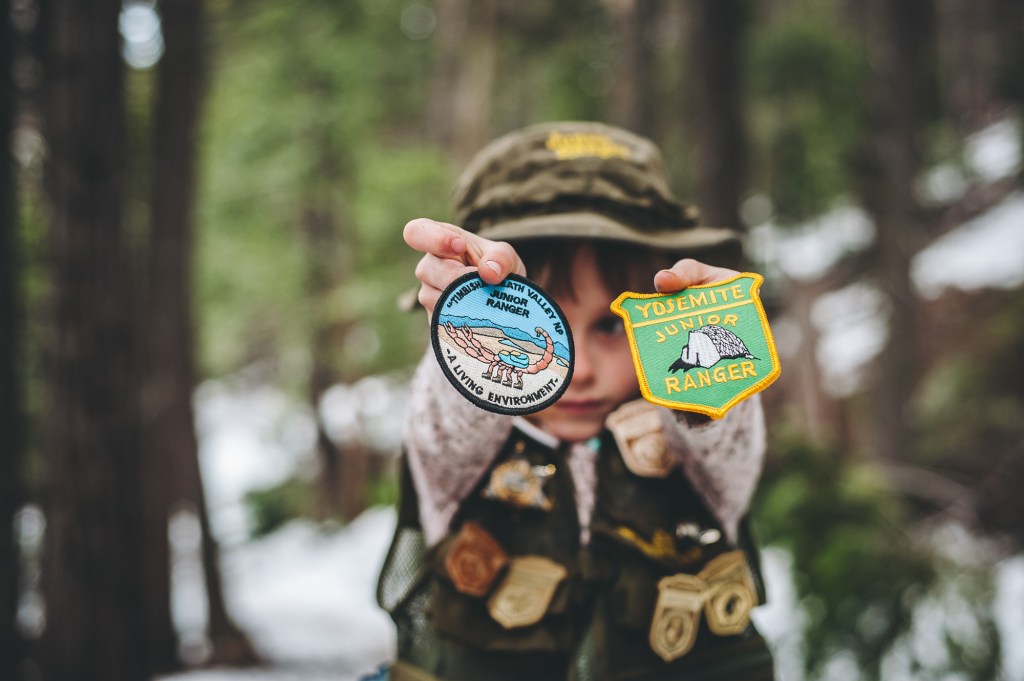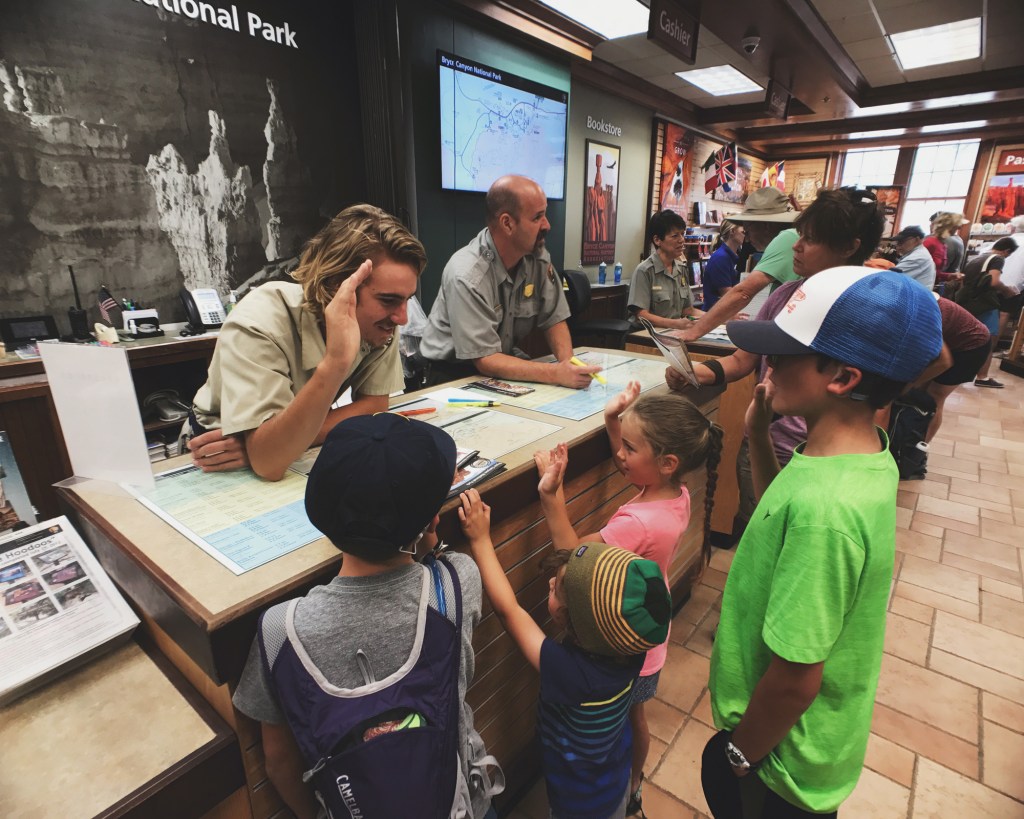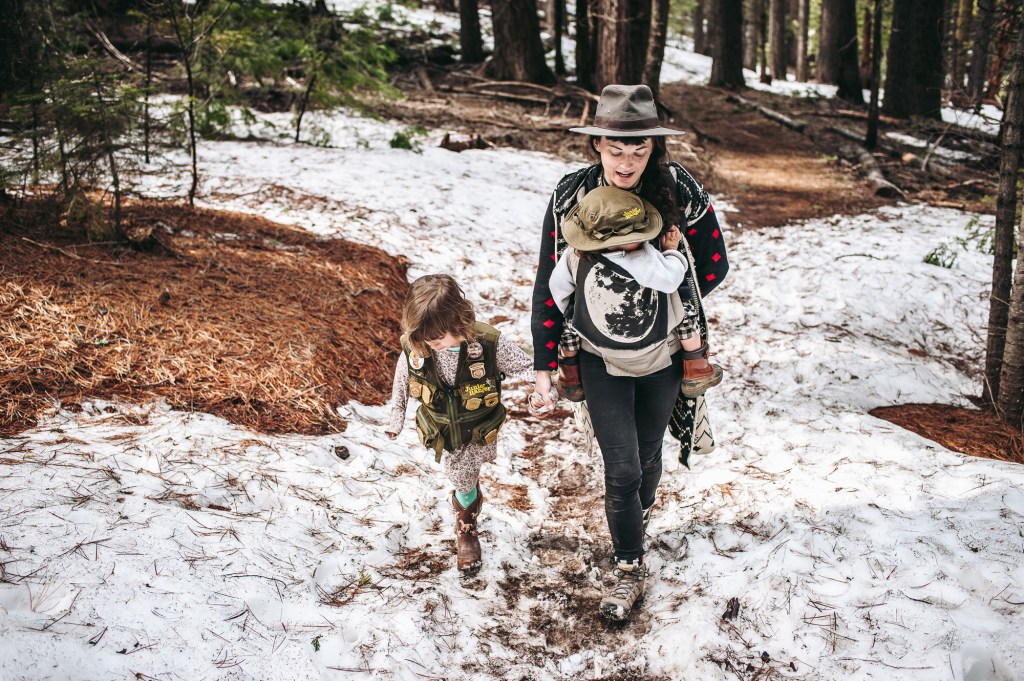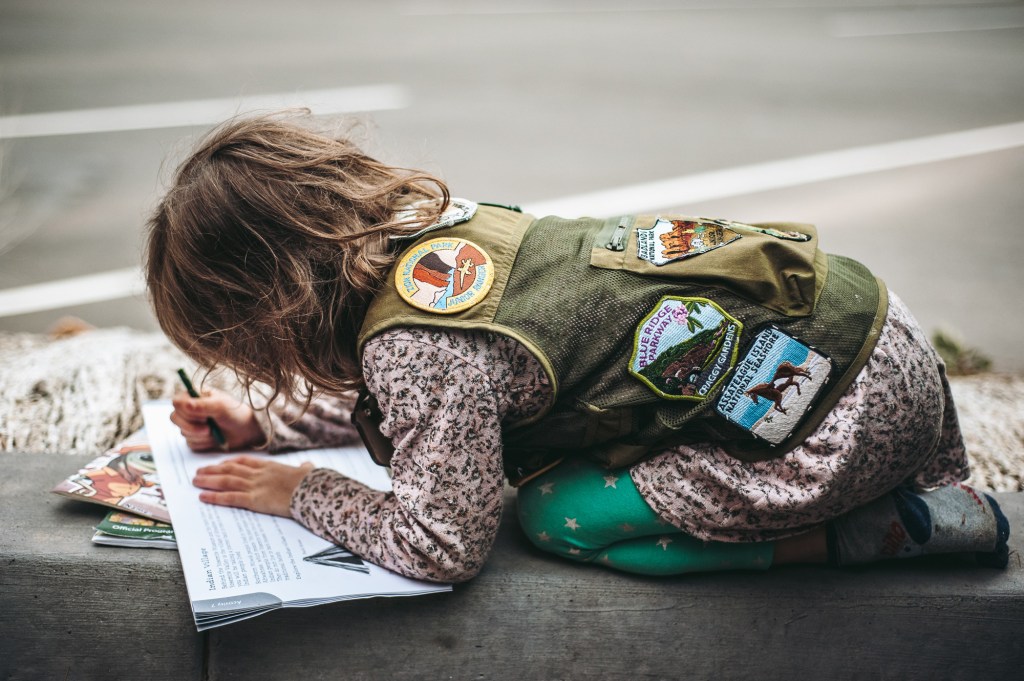When Christine Lindström and her family of five hit the road in 2016 to prioritize a full-time RV lifestyle, she planned to homeschool her three kids. The family would spend a lot of time in national parks, so Lindström expected to work the parks into her curriculum. But she was surprised to discover how comprehensive the National Park Service’s Junior Ranger Program was.
“I knew [the Junior Ranger Program] was there and had intended to use it because we wanted homeschooling to be very experiential. I knew that going to parks would be part of our education. I just didn’t know how great those materials would be,” she said.
The Junior Ranger Program is the National Park Service’s activity-based curriculum geared toward kids ages 5–13, designed to educate children about our federal public lands. Tom Medema, the acting associate director for interpretation, education and volunteers for the National Park Service (NPS), says there are currently more than 200 national parks and monuments offering the program, with each park creating its own curriculum. In some parks, the teaching materials, which come in the form of paper booklets, are free, while in others they cost $3.
After completing the Junior Ranger Program activities and presenting them to a ranger, kids take an oath to become a Junior Ranger, collecting a badge and vowing to protect and learn more about the park. In some locations, kids can complete additional tasks to earn a patch.

A student of the parks shows off two Junior Ranger badges. She has visited and collected badges from more than 26 parks, monuments and historic areas in just a few short years. (Photo Credit: Michelle Craig)
The roots of the NPS curriculum can be traced to the Yosemite Nature School, founded in the 1930s to educate children about Yosemite National Park. The NPS is working to better document the details of the Junior Ranger Program history, but Medema says the curriculum was established enough that, in 1989, he wrote about it for his master’s thesis. From his perspective, the rise of social media has only helped the Junior Ranger Program grow: “When a kid sees a picture of someone with a vest full of badges it just soars. Social media is definitely the accelerant, but it’s been popular for decades.”
It was only a matter of time before Lindström found herself scrapping many of her homeschooling lessons and planning her kids’ studies around the next park they would visit. Sometimes they studied many aspects of a park, like how the geology of an area formed, for weeks before they arrived. Depending on the location, the family would tackle the interactive lessons together, performing science projects, soaking up historical reenactments and interacting with the culture and geology of the parks they visited.
Lindström says her kids love the opportunities for instruction and creative self-expression the booklets provide. And the fact that the assignments come from the parks helps: “If I had come with my own packets some of those days, they wouldn’t want to do it,” she said. Learning about the parks in person has made the lessons jump off the page—and the badges are simply the icing on the cake.
Junior Ranger lessons go beyond making kids aware that the parks exist—or even teaching them how to care for public lands. When the Lindströms traveled to Kennesaw Mountain National Battlefield Park outside Atlanta, Georgia, for example, a park ranger spent lots of time with them, answering tough questions and teaching her kids—now 9, 7 and 2—about what Civil War battles had been fought there.

The Blake family takes the Junior Park Ranger oath during a family road trip in Utah. (Photo Credit: Melissa Blake)
“When we take our kids to places that were battlefields like Gettysburg [and] Yorktown, we talk about what people were fighting for and help our kids understand the positives and negatives of [war] … History is full of things that are terrible and difficult. I’m glad we’re the ones having those conversations with them, since they are going to learn it eventually one way or another,” she said.
Melissa Blake discovered the Junior Ranger Program at Mount St. Helens National Volcanic Monument in 2013, when her oldest children were 1 and 4. “Someone at the nature center saw us and said, ‘Hey, do you want to do the Junior Ranger Program?’” Blake, who is a biologist, said she and her husband fell in love with the Junior Ranger Program almost immediately. The Blakes weren’t homeschooling then, but they are now, and say their five children (now 13, 10, 7, 5 and 3), have become enthusiasts as well.
Blake plans every family trip around a national park, allowing them to leave the school books at home and focus on booklets and badges and the interactive experiences the Junior Ranger Program provides instead.
“The whole point of being out there traveling is to learn from the world. When we have the Junior Ranger Program to follow we can just do that, and it’s fun for them and easy for us,” Blake said.

Savannah Norris travels several times a year with her children to explore the national parks and monuments across the U.S. (Photo Credit: Michelle Craig)
Blake likes that her kids work together to make sure everyone completes the program. “I’ll be wrangling the littlest one and the 5-year-old will say, ‘I don’t know how to draw that!’ And my older daughter will help him … nobody wants to see someone not get the badge, so they all help each other get the workbooks done. It’s the ultimate gold star,” she said.
Not all families are so enthusiastic about the Junior Ranger Program. Heather Ledeboer, who homeschools her kids (ages 15, 13, 9, and 7), thinks there are pros and cons depending on the park you visit. “It’s easier to hear about a place in the news and feel connected to it when you have personal memories there and you really learned about the place from studying it,” she said.
In some cases, she feels like the booklets are busy work—worksheets, word searches and other games that aren’t contributing to her kids’ ability to think critically about the parks and the role they play in society. And there are times when her kids seem almost fixated on earning their badges.
Blake agreed: “Sometimes we are trying to do it too fast. It takes a little away from the moment we are in experiencing the park. I wish we could do pre-work so we could enjoy the time there more without the pressure.”

The motivation to collect badges can inspire hard work and attention to detail among even the youngest students. (Photo Credit: Michelle Craig)
Parents as well as kids can experience some pressure. On a recent trip to Canyonlands National Park, Blake said, they forgot to pay attention to what time it was and when they got back from their hike, the ranger office had closed. Blake’s kids were upset at her for not getting them there in time. Luckily, they don’t live too far away. “I told them it just means we have to come back soon, so that helped them get excited again.”
Want to learn more about the Junior Ranger program and start participating before you head to a park? Check out a few of the options kids can work on from home:
Related articles:
- 10 National Park Hikes for Kids
- Life on the Road, Kids in Tow
- Are Outdoor Preschools the Wave of the Future?
- One Writer’s Quest to Introduce the National Parks to Kids
